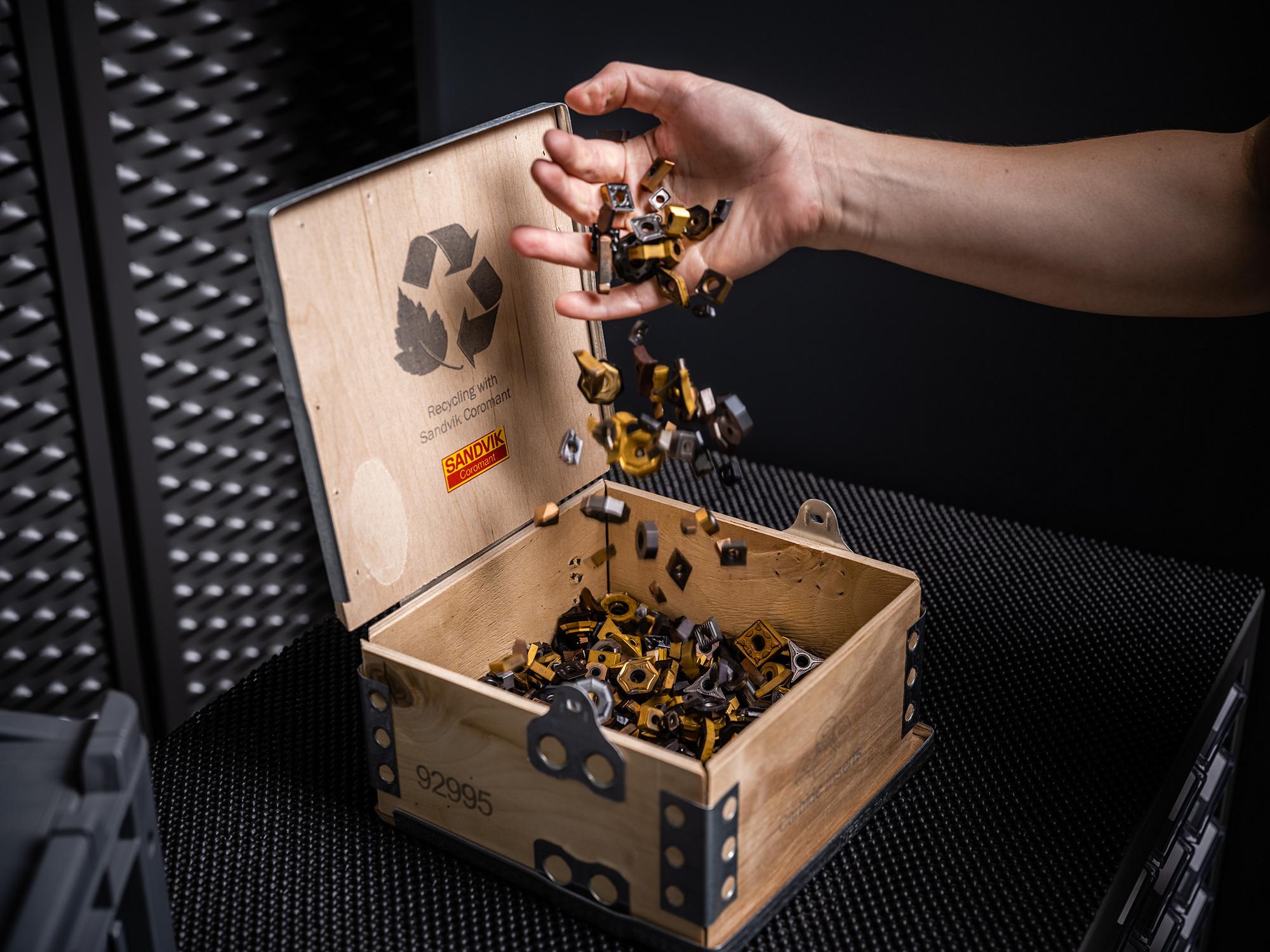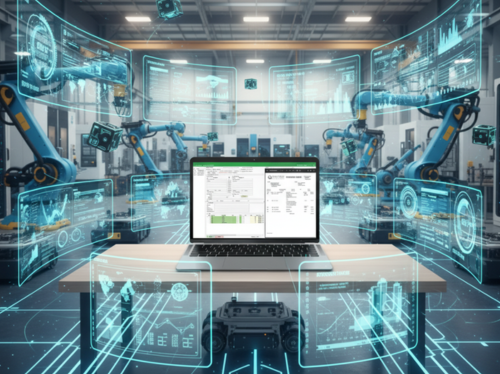Green Manufacturing 101: The Net Zero Blueprint

How can manufacturing become leaner and greener?
The manufacturing industry will be at the forefront of turning COP26’s pledges into reality. As British naturalist David Attenborough pointed out at the event, “A new industrial revolution, powered by millions of sustainable innovations, is essential and is indeed already beginning”. So many areas of a plant can be made greener, so where should manufacturers start? Here, Anders Dellblad, Manager of Sustainable Supply at Sandvik Coromant, reveals the company’s own blueprint for a green factory evaluation.
Industry is responsible for 23% of global emissions and represents the second-highest source of emissions after energy generation systems, according to non-governmental organization (NGO) Energy & Climate. At COP26, a decisive moment to spur industrial decarbonization, several decisions were made to improve the sustainability of manufacturing and achieve the net-zero emissions goal.
Milestone initiatives include the establishment of green shipping corridors, which would create zero-emission maritime routes between two ports to lessen the environmental impact of transport and logistics, and more than 40 nations pledging to shift away from reliance on coal in the next two decades. Changes such as this will undoubtedly make a positive impact on industry’s sustainability status. However, manufacturers must also look closer to home if they’re to make their own processes more environmentally friendly.
Inside the factory walls
Many areas of a manufacturing facility can impact its sustainability credentials. In November 2021, the International Energy Agency (IEA) reported that, while direct industrial carbon dioxide (CO2) emissions, declined 1.6% to 8.7 Gigatons in 2020, they still accounted for 26% of global emissions. Growth in energy consumption over the past decade has been largely driven by the rise in energy-intensive industry subsectors, such as chemicals, iron and steel, aluminium, cement and pulp and paper, among others, with the processing and development of materials proving a large contributor to energy use.
Another area of inefficiency industry simply cannot gloss over is the amount of waste it produces. Industrial waste makes up half of all waste generated globally. Manufacturing is just one stream of industrial waste — but it’s the biggest, and the fastest growing. It is easy to see why manufacturing is such a large contributor to waste — nothing about it is small, it makes up more than half of the world’s Gross World Product (GWP) annually. However, the industry also faces some frightening margins. One estimate is that manufacturing wastes 10% of GWP every year, adding up to £6 trillion.
Here, we’re not just talking about product waste, like the number of scrapped components due to a worn-out tool. Its magnitude spreads far further into every area of manufacturing from research and development to defect products, to faulty machinery.
These statistics paint a bleak picture for manufacturing. However, it does not mean that all hope is lost. It would be naïve to say that manufacturing will, one day, generate zero waste. There will always be product faults and haphazard equipment somewhere down the line. What manufacturers need to work on, however, is limiting these incidents by taking more informed decisions over their plant.
Lean and green
The term green factories was coined a few years’ ago, used to describe a manufacturing plant that is equipped with eco-friendly design and manufacturing processes that improve greenhouse gas emission, environmental pollution and energy consumption. In other words, a green factory is a greener workplace, with greener processes, producing greener products.
Here,” green” is not a hollow word. For a facility to truly be a green factory, it must display tangible ways to drive sustainable practices within the factory, the supply chain and across its customer base. For example, a company looking to build a green factory may invest in measures that reduce scrap rates and machine idling time by optimizing the factory floor layout, or it may take steps to generate, use and recover heat more efficiently, like installing high-efficiency burners that also recover waste heat. It may also want to minimize the distances that parts travel across the supply chain, like COP26’s green corridors proposal, or convert its waste into reusable material.
There’s no checklist for what makes a green factory, green. In reality, there are many sustainable steps a company can take to make its operations greener, whether that’s a robust recycling program or energy efficient heating. But there is a catch to having so many sustainable avenues to explore. Plant managers may feel spoiled for choice, and unable to decide which solutions are best for their factory. After all, no two plants are the same.
The only way of tangibly evaluating a company’s sustainability performance is to keep track of all its factories and facilities around the world. Manufacturers require a contact and reliable source of data that can serve as a reference point for developing a green strategy. Previously, such a tool hasn’t existed — until Sandvik Coromant developed it.
Sustainability in a single tool
The green factories and sustainable facilities assessment tool from Sandvik Coromant covers the entire manufacturing chain from CO2 emissions and waste to production, resources and working environment. Launched in 2019, the tool was first rolled out across 16 of Sandvik Coromant’s global manufacturing facilities, with the ambition of using it across every site in the future.
The tool’s functionality is divided into six different dimensions: health and safety, resources, working environment, emissions and waste, site, building and infrastructure and, last but not least, production. Each dimension is graded on its current performance and its status is attached to key performance indicators (KPIs) to monitor its improvement. Say, for example, a facility finds its manufacturing processes waste a lot of water, it may want to invest in liquid waste treatment equipment that separates pure water from the waste so it can be used again. This is exactly what Sandvik Coromant’s Langfang site in China did in 2020, recovering 69 tons of water from the unit’s waste in the process.
But it’s far more than just a straightforward collection of data. The tool provides highlights, risks and other decision-making suggestions that provide thorough insights into a plant’s areas of inefficiency. Areas including water use and wastewater, surplus heating, use of raw materials, machine running times and even the habit of using paper cups in the employee lounge can all be tracked and calculated to facilitate data-led, measurable steps towards more sustainable manufacturing.
If manufacturing is to power the new industrial revolution, as Attenborough hopes for, it will need to take a holistic approach to sustainability, combining actions from shop floor to top floor.










